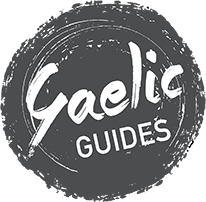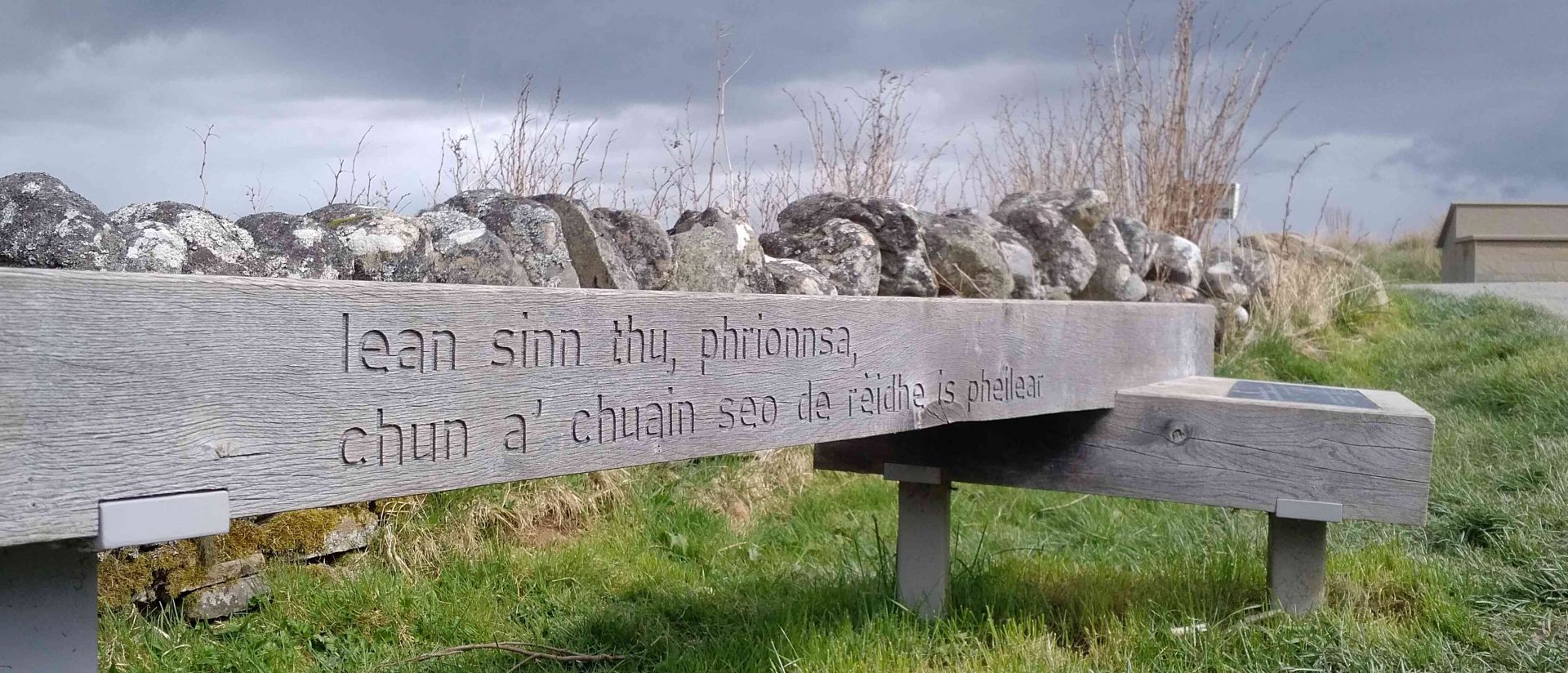Gaelic is an Indo-European language – using the same roman alphabet as other languages in the same family (such as English, Spanish, German, French etc). An interesting point though is that Gaelic manages to get along with just 18 letters in the alphabet, having managed to dispense with J, K, Q, V, W, X, Y and Z! Traditionally all 18 letters were associated with the name of local trees – highlighting the close ties between the old Gaels and their physical and natural environment.
Gaelic is also a Celtic language (a sub-set of the Indo-European family). Simply speaking, the Celtic languages are split into two groups – Brythonic or Goidelic – or the P Celts and Q Celts. Scottish Gaelic is a ‘Q Celt’ language, along with Irish Gaelic and Manx. Welsh, Cornish and Breton (France) are P Celts.
An easier way to highlight this difference is to look at the word for ‘head’. In the P Celt languages this is ‘Pen’. In Q Celt languages, it is ‘Ceann’ – the letters ‘Ce..’ having a Q-like sound. This can be seen in many place names across Scotland such an ‘Ceann t-Sàile’. This has come into English as Kintail. ‘Ceann t-Sàile’ means the ‘head of the salt water’ – the head of the sea loch.
The generally-accepted story is that Gaelic came to Scotland from Ireland, although it is also suggested that both ‘Irish’ and ‘Scottish’ Gaelic shared a common root across the western seaboard of the British Isles before diverging in both countries.
Whatever the case, Gaelic spread across almost all of Scotland, and became the language of the Scottish royal court in the 1100’s. Since then, with growing trade and commerce with Europe and elsewhere, Gaelic has been declining. There was official, British Government repression of the language following the Javobite rebellions of 1715 and 1745, as the Westminster Government associated Gaelic with Catholicism and rebellion. Steps were taken in schools to promote English, and repress the use of Gaelic. The Highland ‘aristocracy’ or Clan chiefs were also obliged to send their eldest sons to education in England. Coupled with migration to the cities as part of the industrial revolution; the migration of thousands of people to the New World (either forced or voluntary); and the low economic and social status of the Highlands, a variety of forces contributed to Gaelic’s decline. However it has been a slow process. As recently as the 1870’s it was said that shopkeepers in Inverness benefitted from having both languages to speak to customers; it’s only in the latter half of the 20th Century – into the 1970’s and ‘80’s – that the last native speakers died in Perthsire or Aberdeen-shire, areas that would long ago have been considered to be non Gaelic-speaking.
More recently action has been taken to stop the decline, and to support the growth of Gaelic. This includes the passing of the ‘Gaelic Language(Scotland)Act’ in 2005, and the establishment of a Scottish Government body, with funding to promote the language’s growth.
The most notable initiative has been the establishment of Gaelic Medium Education in Scottish schools. Under this model, school children are educated through the Gaelic language – learning subjects such as mathematics or geography in Gaelic. From small beginnings in 1984 – with just two classes in primary schools in Glasgow and Inverness – this education has proved extremely successful. There are now Gaelic units (at the time of writing) in some 65 primary schools and 20 secondaries, as well as many more pre-school groups. Demand has been such that the latest development is the establishment of ‘Gaelic only’ primary schools, and there is real growth here. Glasgow, Inverness, and Fort William have dedicated Gaelic schools, with building underway on another in Portree.
The significance and importance of this education system is that it creates new, younger generations of Gaelic speakers, and allows real optimism for the future. It’s rooted deeply in the past, but despite all that’s happened over the centuries, the Gaelic language is demonstrating real strength and resilience.
Gaelic also serves Scotland well by playing an important part in other industries – such as the creative arts, food and drink branding, or even tourism!
If you’d like to know more, here are links to some high-quality resources:
Open University –an authoritative set of pages, which will give a much deeper insight into Gaelic in history and its place in modern Scotland. http://www.open.edu/openlearn/languages/more-languages/gaelic-modern-scotland/content-section-0
LearnGaelic.net – an online learning resource, including a good dictionary with some sound files.

